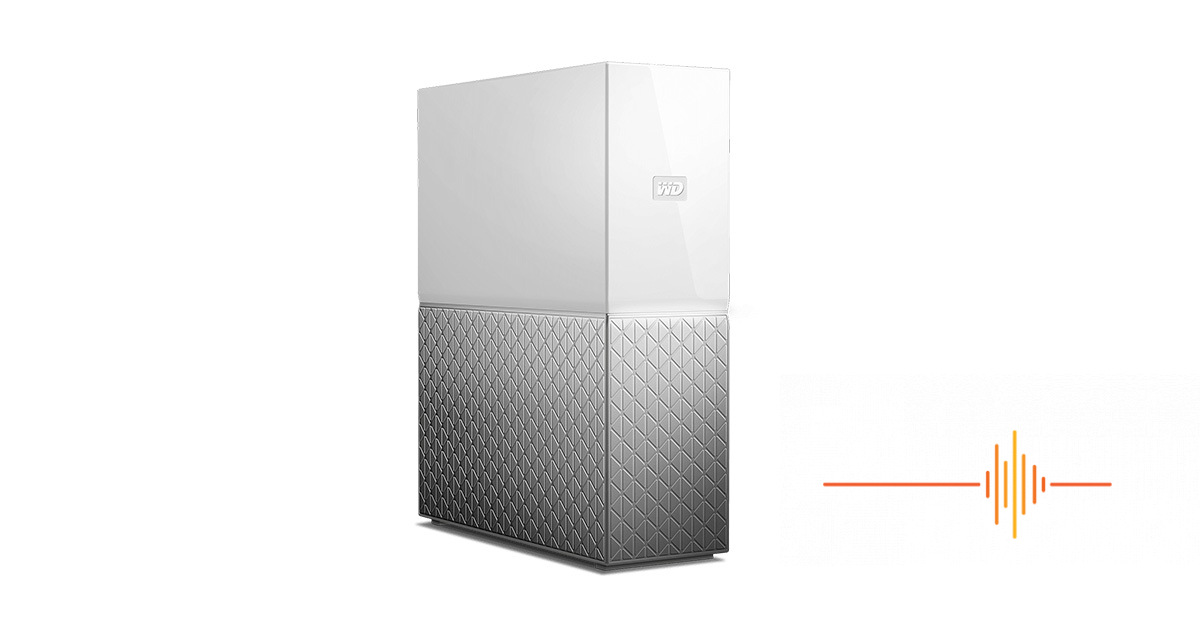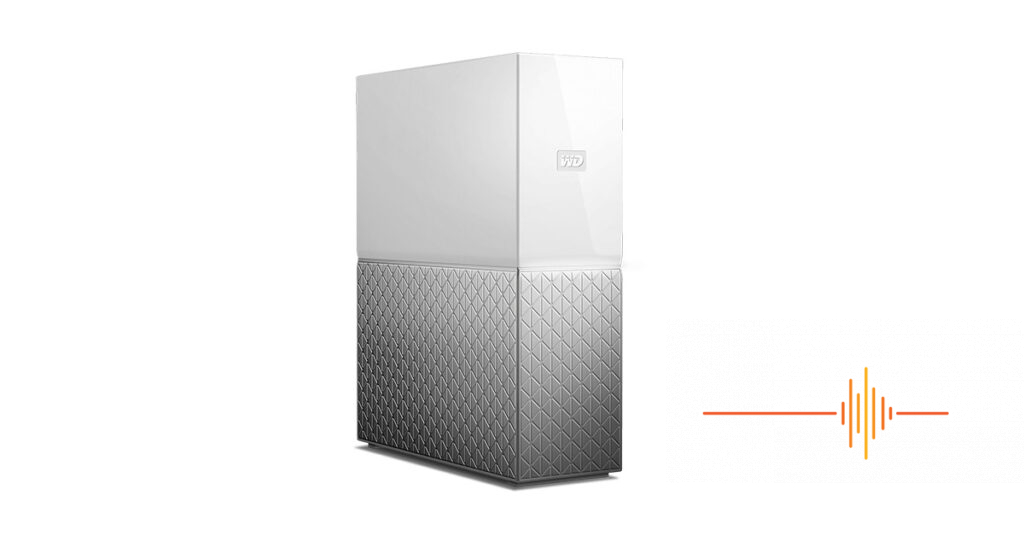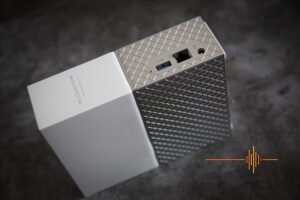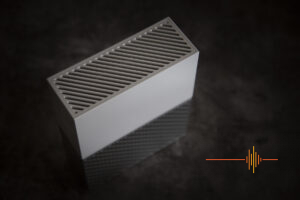As a Data Disaster Recovery Specialist (i.e. person who sets up appropriate data protection systems and, when businesses don’t have these, tries to save things when it all goes to hell), I was keen to grab a My Cloud Home and dive in to see how it performed.
Now, Western Digital has been in the news lately and not always in a positive light. DRN has always been a fan of WD’s products, but I pride myself on performing due diligence and am here to offer my thoughts on the My Cloud Home backup solution.
Before we begin, let me address the elephant in the room. June 2021 saw reports of WD My Book Live devices being remotely wiped due to a security vulnerability. Two vulnerabilities, actually. The official advice is to disconnect any WD My Book Live units from the internet to prevent the exploit from wiping all your data. Western Digital has provided a specific list of affected units and SKU here. It is important to note that none of the My Cloud units are known to be affected.
I am not going to dive into details of the My Book Live vulnerabilities; it is not in my scope for this review. Back in March 2021 I wrote a long editorial piece for World Backup Day. Since then, there has been plenty of other incidents that have happened globally that highlights much of what I said. There is Asteelflash, Home Hardware, National College of Ireland, UnitingCare Queensland, Swiss Cloud, Colonial Pipeline, Bose Corporation, Fujifilm, Salvation Army just to name a few in different verticals. Of course, if you have ever spent any time in infotech managed services, you would have come across Kaseya — their security breach is currently affecting up to 1500 customers.
In short, data protection is vital. But you have to make sure you have the right tools and strategy for it.
First Impressions
The My Cloud Home is like a book. The unit looks slick and feels sturdy. The My Cloud Home is a silver and white monolith standing proud that, as you can see in our unboxing video, totally does not need to be treated with kid gloves.
The two tone finish bi-sects the unit at its horizontal mid-point. When powered on, a white LED indicator shows its status at a glance where the fascia changes.
There are only three connections at the back — power, LAN connection and USB. Yes, this baby is hardwired all the way so you will need to have it close to your router or a connected LAN point.
Getting Started
WD provides a quick start card with an unique device code on it. Essentially you hit the mycloud.com/hello URL, setup an account (or if you have one already, sign in), key in the 9 character code and wait for the unit to be found and registered. This part was quick and simple, except for the bit where I failed to seat the RJ45 cable in properly. [Editor’s Note: Peter is judging you, Mr IT…]
The review My Cloud Home unit needed a firmware update and this is where the fun starts. Because I was lazy and jumped onto the web browser on my computer, it directed me to get the app on my phone. There was no QR code for me to scan so I grabbed the “My Cloud” app, started the process which then told me to get the “My Cloud Home” app instead to continue.
Once I got the right app going, I signed in with the account I created earlier and was given the option to immediately setup a backup for my phone. I followed the bouncing ball then hunted around a little to get the firmware update happening.
I am not sure if it was the app or the process itself, but it took me a few tries before it would confirm that the firmware update was actually happening. Once I did get the confirmation, it did it all within a few minutes and all the latest features became available.
In Use
Using the My Cloud Home is simple. From the smartphone you set it up to backup all your photos and it will do so in the background. You can import photos that are not in the camera roll by default. After that you can create photo albums and share them with other people
The My Cloud Home also has PC and Mac clients – WD Discovery. On the PC, it integrates into Windows Explorer as a drive under My Computers. It works just like another drive on your system so all the normal file operations applies. From either the app or the desktop client, you can browse all the files that you have put there under your account.
The WD Discovery software gives access to WD Security, WD Drive Utilities and WD Backup.
As the name suggests, WD Security sets password protection for the drive and enables hardware encryption on supported drives.
WD Drive Utilities is a standard toolset to do diagnostics and management of the drive.
WD Backup automatically protects your files, photos and documents to the My Cloud Home, and offers off-premise backups to a cloud storage provider. It was a bit disappointing to find after a couple of failed attempts to install it from the WD Discovery interface, that WD Backup support ended in August 2020 – almost a year earlier, but the latest WD Discovery software still references it. It is possible to download it from WD’s website if you really want though. The software that replaces it is Acronis True Image for Western Digital, which isn’t exactly an apples to apples replacements.
The WD Backup software facilitates local file (PC) backup to a cloud storage provider. On my rig, it found Dropbox and asked for an authentication token. This is where it gets confusing because …. WD Backup found Dropbox on my system because I already have Dropbox client installed, which is already sending what I want to Dropbox … so … mm, what does WD Backup really do?
The Acronis True Image is a whole system image level backup. So rather than backup individuals folders and files, it takes an image of your hard drive and puts it on the WD unit. The good thing is, if your system is corrupted, you can restore the entire thing and have it up and running in a few (or more) hours depending how big your image is. The bad thing is, the software does not find My Cloud Home.
The last option is GoodSync for WD. GoodSync is a powerful file synchronisation software with a somewhat clunky interface and a learning curve to really make use of it. I have used GoodSync extensively in the past and it does the job.
Copying files across the network into the My Cloud Home works fine, it was not anything particularly exciting nor was it slow. It did crash at the end of a 2.6GB test file copy and I had to wait for the unit to come back to life. This happened only once, incidentally on my first test copy actually.
Multiple Users
It is easy to invite other users to your My Cloud Home, and you are not limited to users in your own household. Simply go to the app, settings and “Add User”. The invitee, upon creating their own My Cloud account, gains access to their own private space on the My Cloud Home.
The trick here is to send the invite and not jump the gun in creating an account and logging in. The recipient has to accept the invitation via the link and sign in with their My Cloud account, otherwise the system will ask if you want to set up the My Cloud Home as a new device.
Other Features
There is a USB port on the back of My Cloud Home. Flash drives (or USB drives) connected to it, however, do not get shared on the network. Via the My Cloud website or the smartphone app, you can copy data to and from it. It is the only way to interact with an external device and you cannot “just access” files on the USB device directly.
Additionally WD has some third party integration with the My Cloud Home with some geographical limitations. These include:
- act as a DVR to record shows (in USA, Canada, UK and Denmark only)
- Plex media server
- Social and Cloud Import – one way sync from cloud offerings such as Dropbox and Google Drive, as well as Facebook albums
- My Cloud Alexa Skills – ask Alexa to play music stored on your My Cloud device (in English and in US only)
- Sonos – Connect to your Sonos app to browser and play songs stored on your My Cloud device
- Network Import – Import data from an older My Cloud device model.
Gripes
I have a few bones to pick, and apologies to WD because I just don’t agree with the design decisions on the My Cloud Home.
For starters there is no quota management available on the My Cloud Home. If I invite the teenager onto it, it is a guarantee he will chew up disk space with whatever content he creates.
There is no overarching administrator access for data management, if you remove a user all their content is automatically deleted. You will never know what is stored there but you will get some space back.
There is no NAS features or even a static IP address. I can get to a public SMB share if I connect via IP which I had to discover through my DHCP leases.
No means to sync directly from My Cloud Home into cloud storage.
It’s a single point of failure – there is just one drive inside.
Conclusions
What the My Cloud Home is, is a highly simplified centralised storage device for a non-technical home. And this is where it is having an identity crisis because I cannot imagine trying to teach a non-technical person how to run Acronis or Goodsync, which are the provided (with time limitation) software to add value.
Coming from where I normally am, a highly technical user with just a bit too much knowledge of how data protection should work, the My Cloud Home is an exercise in futility. All the use cases I can think of, already have other solutions in place. For example yes I can automatically backup photos from everyone’s devices into the My Cloud Home, but then again, I am already doing that into Google Photos. Yes Google has recently removed the unlimited free storage options, but when you weigh up the cost of the WD My Cloud Home versus a monthly subscription fee, does the math add up?
What frustrated me most was the lack of basic functionalities, not even a power save between certain hours to reduce power consumption. I know I harp on about layers of data protection, but putting all my eggs in one basket (read: single hard drive) and a single layer of protection here frightens me.
I cannot in good conscience recommend the My Cloud Home as a backup solution. It may be a decent media streamer but that was not the focus of my review. If it meets your needs, it is available in 2, 3, 4, 6 and 8TB capacities with a price range around $200 to $480. A number of major retailers stock them including JB HiFi, Harris Technology and Officeworks.
Specifications
Capacity: 2, 3, 4, 6, 8TB
Interface: Gigabit
System Requirements
My Cloud Home Desktop App (64-bit operating system required): Windows® 10 or Windows 8.1/8.0 operating systems, macOS® Big Sur(11), Catalina(10.15), Mojave (10.14), macOS High Sierra (10.13) operating systems
My Cloud Home Mobile App: iOS 11 or higher operating systems , Android Marshmallow (6.0) or higher operating systems , Router and Internet Service Provider for Internet connection
Supported Browsers: Internet Explorer® 11 or higher , Microsoft Edge , Safari 8.0 or higher , Firefox 45 or later on supported Windows and macOS platforms , Google Chrome 50 or later on supported Windows and macOS platforms
Supported Streaming Options: H.264 via Android and iOS media playback , H.265 via Android and iOS media playback
Note: Compatibility may vary depending on user’s hardware configuration and operating system.
Dimensions (L x W x H) : 14×5.3×17.5 cm (5.51″ x 2.09″ x 6.91″ )















